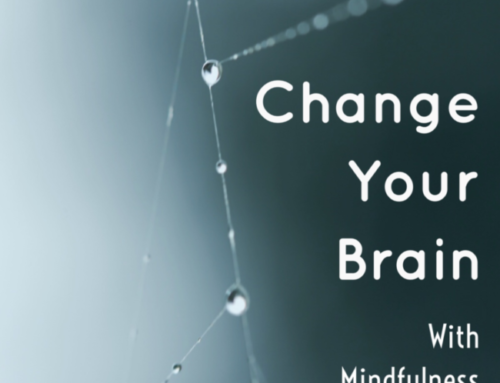
Trauma is a topic that comes up for many of my clients at some point during our work together. There is an old adage in psychology that points to the fact that the issue that someone bring up in the first session is rarely the core issue that needs to be addressed. Sometimes, after working with a client for a while, we eventually identify a sense that there is more than we can heal in regular talk therapy, and we need to loop in a trauma specialist, usually one who is well-trained in something called EMDR.
EMDR is an abbreviation for “eye movement desensitization and reprocessing therapy.” As much as that title is technically accurate, I find it can sound misleading. To me, it makes it sounds like the work is cold and medical instead of the warm, compassionate and powerful healing therapy that it really is. I want to take some time today to offer a basic explanation about how trauma comes up in therapy and how EMDR can be a game changer for those who have some kind of trauma in their background.
The Body’s Response To Trauma
When humans experiencing something traumatic, our brains have trouble processing it immediately. Under normal circumstances, our experiences are sorted and processed by the brain and filed away into something like “folders” for later retrieval. The experiences are processed and integrated smoothly. With traumatic memories, however, this process is interrupted. The brain basically prevents the brain from acknowledging and processing the information so it never gets filed away where it belongs.
In other words, when things are so awful, so scary – your brain basically says “Danger! This human can’t handle this!” As a response, your mind checks out somewhat and disconnects from your senses, so that you can simply get through this terrible experience. Then afterward, your brain tends to shove it away in some dark corner of your mind and puts walls around it. On top of that, your mind puts alarm bells and tripwires all around it, so if anything ever comes up that reminds you in any way about the event, your fight or flight system will be set off. The trauma reaction will point you in every direction other than the root of the issue – acknowledging and addressing the trauma itself.
Let’s say, for example, you experienced a scary automobile accident in the past. And then years later, you hear a song playing that gets your heart racing and immediately gives you a sense of needing to escape from something dangerous. You look around and see there’s nothing scary actually occurring, so you have no idea why you’re feeling this way. But in reality, it turns out the song that’s playing now is the same song that was playing on the radio right before the car accident. Your brain remembers, but your consciousness does not. Your brain will do everything it can to help you not remember that event by triggering fight or flight when anything comes up that in any way at all reminds you of the event. It could be a scent, a sound, or even a relationship dynamic. People can live for years, dealing with the symptoms, and never know the core reason.
Identifying & Recognizing Trauma
EMDR and trauma comes up a lot in therapy sessions. Often when I initially bring up the possibility of traumatic events, my clients generally resist the idea, claiming that they’ve never had anything traumatic in their life. But upon further exploration, we identify that traumatic things have actually happened to them. But somewhere in the back of their mind, they believe that the word “trauma” is to be reserved for the people who really deserve it. The people who had really truly bad stuff happen to them. And their brains will minimize their own experience to help them continue to avoid the reality that something scary really did happen in their past.
During the #Me Too movement, when Harvey Weinstein was on trial, social media was filled with examples of women talking about times where they were harassed or assaulted and never spoke up, I had many clients suddenly feeling spikes of anxiety and fear and rage that they could not explain. I was appalled at the number of people who eventually were able to identify past harassment and assault. At this point, I started to partner with local EMDR therapists to work together to help my clients heal.
The Transformative Power Of EMDR
There is no way to overstate the power that EMDR therapy offers. I have seen clients heal in ways they never imagined possible. While EMDR doesn’t erase what happened to a person, it does turn down the volume of the reactionary symptoms that someone has learned to live with their whole lives. After EMDR, clients sometimes describe the impact as an absence of fear, depression, and hypervigilance. Many of them describe an increased access to positive feelings like joy and awe and wonder without the pervasive “waiting for the other shoe to drop” feeling that they were accustomed to.
Again, I am not a trauma specialist, but my basic psychologist understanding of how it works is that you meet with an EMDR therapist who begins by teaching you ways to access a felt sense of safety in your body when things start to get activated. You learn to notice when your body starts to go into fight or flight, or have a trauma response and you learn how to trust your own ability to calm yourself down and feel safe in the moment. Then, you start talking through a traumatic memory, generally not starting with the scariest one, if there are multiple events.
Then you start telling the story at your own pace, and the moment you start to feel any sense of fear or activation, you are able to pause and ground yourself. Even though you were talking about traumatic events and feelings, you are always in control of the situation and can always pause and step out of it. There is something transformative about re-experiencing some old emotions within a context of safety and choice in the present moment.
During the EMDR session, the therapist uses different forms of bilateral stimulation like tapping, listening to tones or following an image moving back and forth. This helps the brain integrate and heal while the processing is happening. The therapist also helps the client identify core beliefs about oneself that are associated with the traumatic memories and sensations that come up when the memories are recalled.
Going through the EMDR process allows those traumatic memories to be broken down and integrated in a safe way – so the memories get filed away like all the other memories and no longer hold the emotional charge that they used to.
This is a basic overview of the process, but it is by no means a complete or exhaustive explanation. If you are interested in learning more, I recommend this explanation through the EMDR Institute.
It is perfectly normal to spend some time with a general talk therapist, like myself, before deciding to try EMDR (or another trauma therapy like somatic healing or Internal Family Systems). I have had many clients establish a relationship with me, then eventually when they are ready we bring a trauma specialist on the team and then the client continues working with me to integrate the process and continue healing. Fortunately there are many paths to healing and moving ahead in a positive direction.

